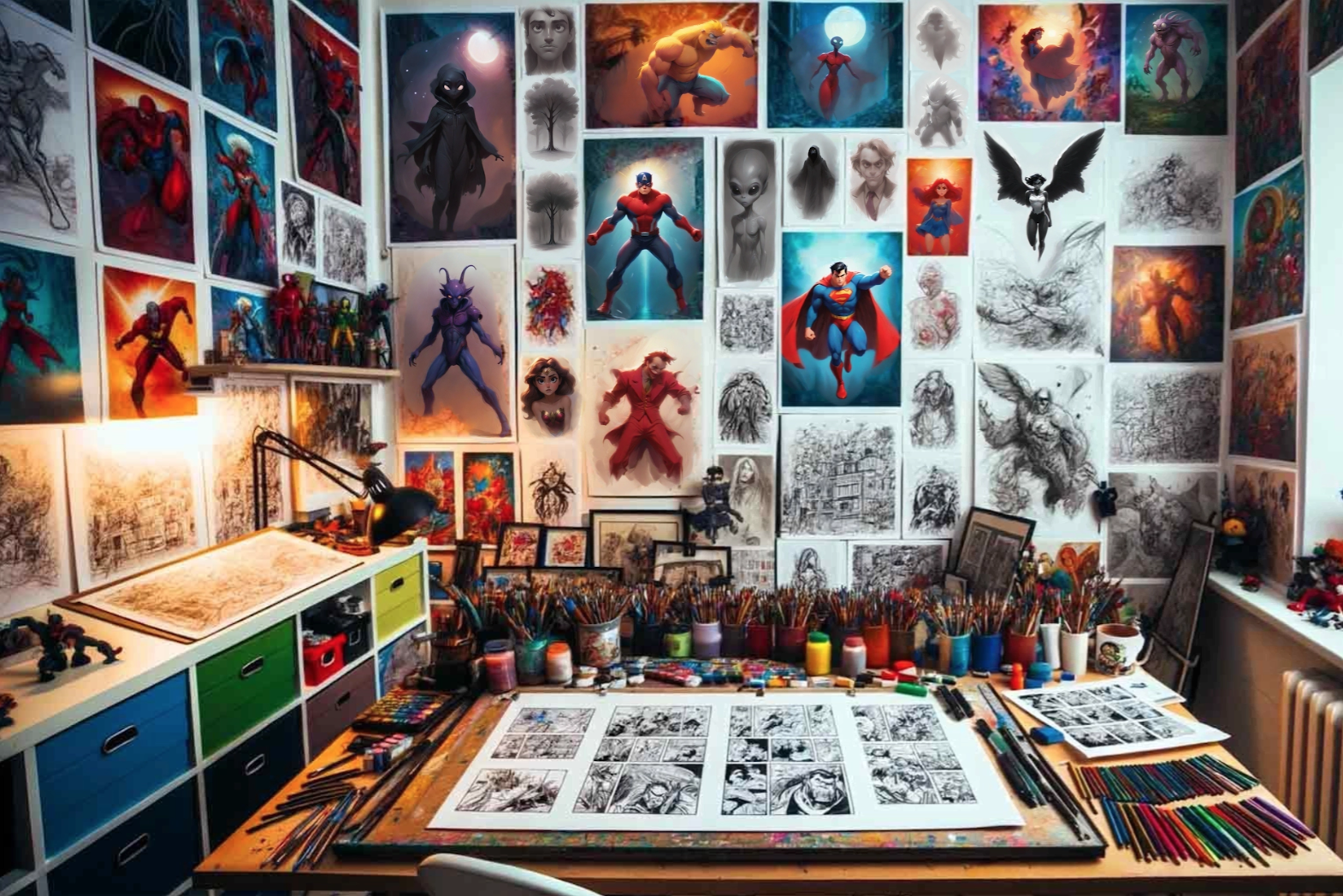Exploring Comic Book Art: Comic Book Sketches & Techniques
Master comic book artistry! Learn sketching, inking, and storytelling techniques to create captivating visual narratives that engage and inspire.

Introduction to Comic Book Art
Isn’t art about breathing life into your imagination? Well, the comic universe is more than just stories - it’s an art form that captures visual storytelling. This blog dives into the heart of comic creation and explores how artists translate ideas into engaging art. Continue reading to understand the techniques used by creators to come up with larger-than-life comic books and sketches.
Comic book art has evolved from a niche to a method of illustration, captivating audiences of different age groups. It combines elements of drawing, storytelling, and typography to create both visually engaging and narratively compelling stories. Comic book sketches are a part of the comic book creation process and serve as the foundation of the final artwork.
Unleash your creativity with Dashtoon's Comic Character Maker and bring your sketches to life!
Overview of the Significance of Comic Book Sketches in Storytelling
Comic book art plays an essential role in storytelling because it blends visuals, abstract emotions, dynamic actions, and narrative elements to create memorable experiences. Comic book sketches are the foundation of this art form, allowing artists to translate their ideas into life. Through this medium, artists can:
- Visual Representation: Comic book art brings stories to life - allowing readers to visualize characters, settings, themes, and emotions.
- Emotional Connection: Through expressive character designs and dynamic panel compositions, comic book art enables a deep emotional connection between readers and the narrative.
- Sequential Storytelling: The unique blend of text and visuals in comic books creates a seamless flow of storytelling, guiding readers through the narrative in a captivating and engaging manner.
The Role of Sketches and Drawings in the Development of Comic Books
Comic book sketches play a crucial role in the development of comic books, and act as a foundation for story development. They serve multiple roles in the comic book creation process:
- Character Development: Sketches enable artists to explore and refine character designs, ensuring consistency and visual appeal throughout the comic book. Check out our guide on "Creating Your Own Comic Book Design" to learn how to design consistent characters with AI.
- Storyboarding: Rough sketches help artists plan out panel layouts, compositions, and narrative flow, serving as a visual roadmap for the comic book's progression.
- Experimentation: Sketches provide a platform for artists to experiment with different styles, techniques, and creative approaches, allowing them to push the boundaries of their craft.
The Fundamental Stages of Comic Art Creation

Creating comic book art involves a dedicated and creative process - from initial sketches to final touches. Each step of the process is important to bringing the comic’s vision to life. This section of the blog introduces the primary phases of comic artwork and emphasizes how each step contributes to crafting vivid and engaging stories
Brief Introduction to The Primary Phases in Comic Artwork
The creation of comic art and sketches typically involves three fundamental stages: the rough sketch, refining the pencils, and inking the work. Each stage builds on the previous one, refining concepts and sketches into the final artwork that captivates readers. Let’s know more about these stages by reading this blog.
The Importance of Each Stage in Developing Compelling Comic Sketches and Narratives:
Step 1 - The Rough Sketch
Step 2 - Refining the Pencils
Step 3 - Inking the Work
Conclusion: Comic Book Drawing Processes

In conclusion, this detailed blog explores the fundamental stages of comic book sketches and comic art creation - from the initial rough sketches to refining pencils and inking the final artwork. This journey of creation should be fun and enjoyable. It is also important to understand that these elements help to transform the comic into a captivating story that resonates with its readers.
While this blog provides a framework for the comic book drawing process, it's essential to remember that every artist's journey is unique. Embrace the process, experiment with different techniques, and find what works best for your creative vision. As an artist, your creative process is a personal and evolving journey. The techniques and approaches mentioned in this guide serve as a starting point, but ultimately, it is the creator who builds their own path.
Explore different comic book art styles and find the one that resonates with your creative vision.
Still wondering where to start? Well, Dashtoon simplifies this journey with AI-powered tools that help you design your characters and choose the correct page layout. Explore Dashtoon Studio and begin your journey today!
Read Next: Exploring Different Comic Book Art Styles | Creating Your Own Comic Book Design
